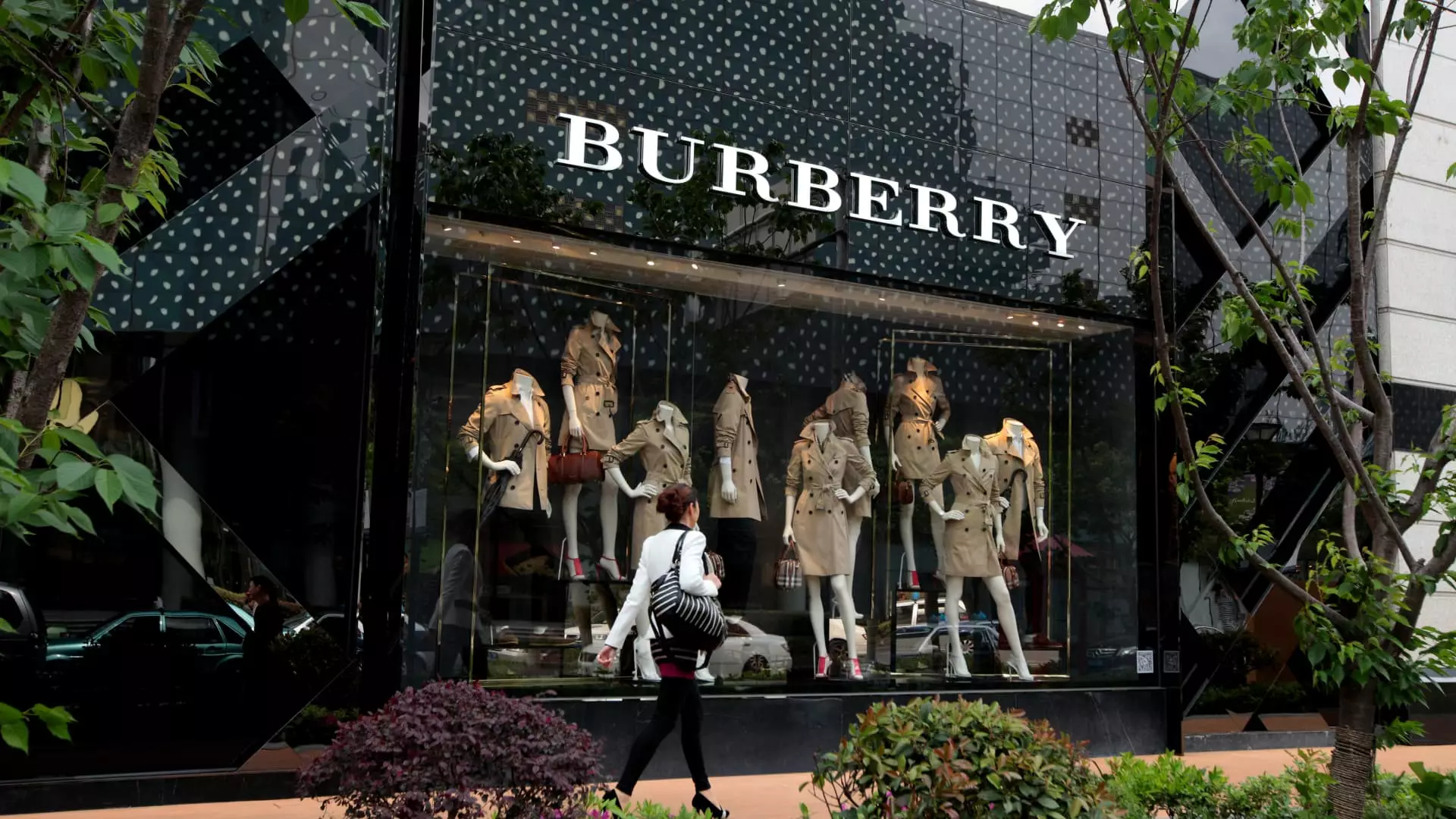Burberry, the iconic British luxury fashion house, finds itself at a crucial crossroads as it embarks on a strategic rebranding effort dubbed “Burberry Forward.” With declining sales overshadowing the brand’s reputation, Burberry is pivoting back to its roots in heritage designs and signature products, aiming to reclaim its position in the competitive luxury sector. This substantial overhaul, unveiled recently, not only seeks to rejuvenate brand appeal but also to restore consumer confidence as the luxury market faces turbulence.
The luxury fashion industry has experienced a notable slowdown, with personal luxury goods expected to contract by 2% this year. In this complicated landscape, Burberry reported a significant 20% dip in sales for the second consecutive quarter, spurring urgency for the company’s new CEO, Joshua Schulman, who took the helm after a turbulent decade that saw multiple leadership changes. As Burberry navigates these troubled waters, Schulman has outlined a framework that emphasizes quality over quantity, focusing on the brand’s celebrated outerwear and scarves—key pieces that encapsulate its heritage.
Strategic Realignment: Emphasizing Core Products
Schulman’s vision acknowledges a disconnect between consumer expectations and Burberry’s recent direction, which leaned heavily into niche markets at the expense of core offerings. Analysts have lauded this return to heritage as a promising strategic pivot. RBC Capital Markets analyst Piral Dadhania highlighted the potential for authenticity in focusing on outerwear, a segment that can differentiate Burberry in an increasingly crowded luxury market. By prioritizing timeless styles over transient trends, Burberry hopes to appeal to both loyal customers and new consumers drawn to the brand’s prestigious history.
The reset comes at a time when many luxury brands are experiencing identity crises, struggling to balance innovation with tradition. Schulman’s approach serves to streamline product offerings while carving out a credible narrative that resonates with today’s discerning shoppers. The emphasis on signature products will not only bolster brand recognition but may also foster a renewed sense of desirability for the entire collection.
The market reacted positively to Burberry’s strategic news, with shares witnessing their most notable growth in history, surging over 22% on the announcement day. Such a rebound indicates investor confidence in the potential for a rejuvenated Burberry brand. However, the previous year’s underperformance lingers in investors’ minds, as declines of approximately 39% year-to-date paint a stark picture of the challenges ahead.
Schulman’s ambition to steer Burberry toward sustainable growth hinges on a reinvigorated product strategy and the adept alignment of business objectives with design vision. Although analysts remain optimistic, they caution that the success of this initiative rests significantly on executing a cohesive message across product design, pricing, and marketing strategies. The involvement of creative leadership underlines the challenge, as synchronization between Schulman’s business acumen and the designers’ vision will be crucial to achieving transformative goals.
As Burberry charts its path forward, parallels can be drawn with other brands that have successfully navigated rough waters by staying true to their heritage while adapting to contemporary consumer trends. For example, Louis Vuitton demonstrates a balance between luxurious artistic collections and more accessible staples, maintaining brand identity while addressing market demands. Such strategies could serve as a guiding light for Burberry as it seeks to penetrate deeper into the high-end luxury sector while revamping core offerings.
The recent tumult within the luxury market has led to shifts in consumer behavior, with shoppers increasingly gravitating towards brands that effectively combine history with modern sensibilities. If Schulman and his team can harness the essence of Burberry’s British heritage while appealing to aspirational consumer bases, they could very well position Burberry as a benchmark for reinvention in the luxury sector.
Burberry’s strategic overhaul marks a critical moment of reinvention amid challenging market dynamics. By returning to its signature products and emphasizing the brand’s heritage, Burberry stands poised to reconnect with consumers and revitalize its brand identity. However, sustaining this momentum will require deft execution, a clear alignment between business strategy and creative vision, and a nuanced understanding of the luxury consumer landscape. With its best days theoretically ahead, Burberry’s ability to adapt while staying true to its roots will define its journey in the years to come.

